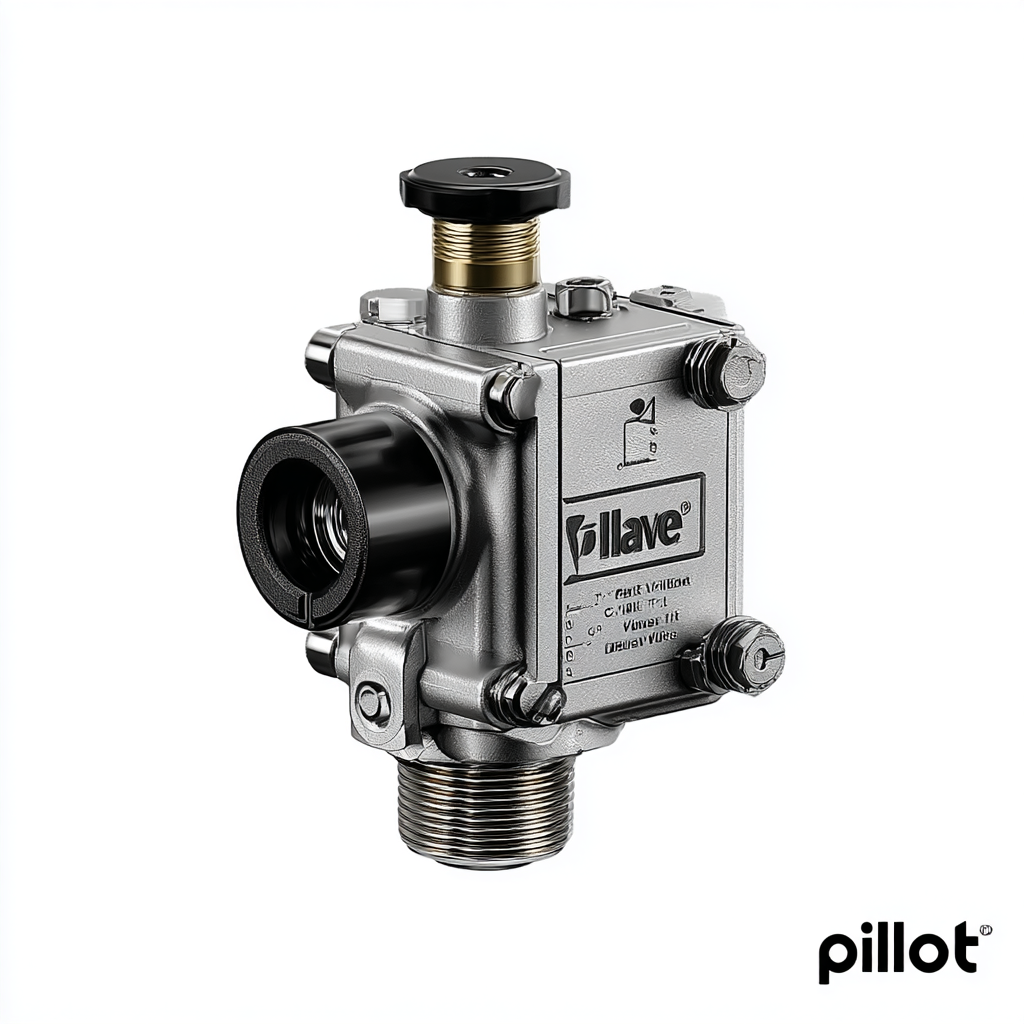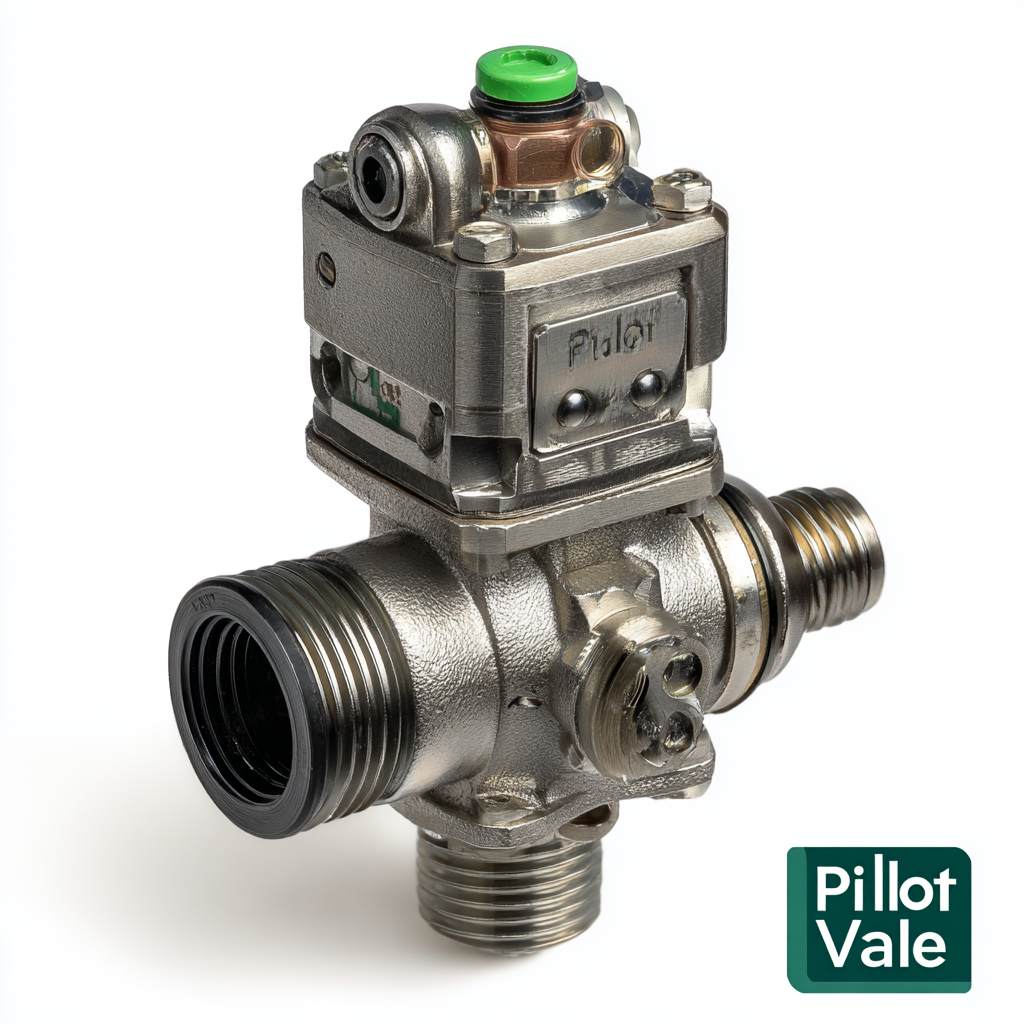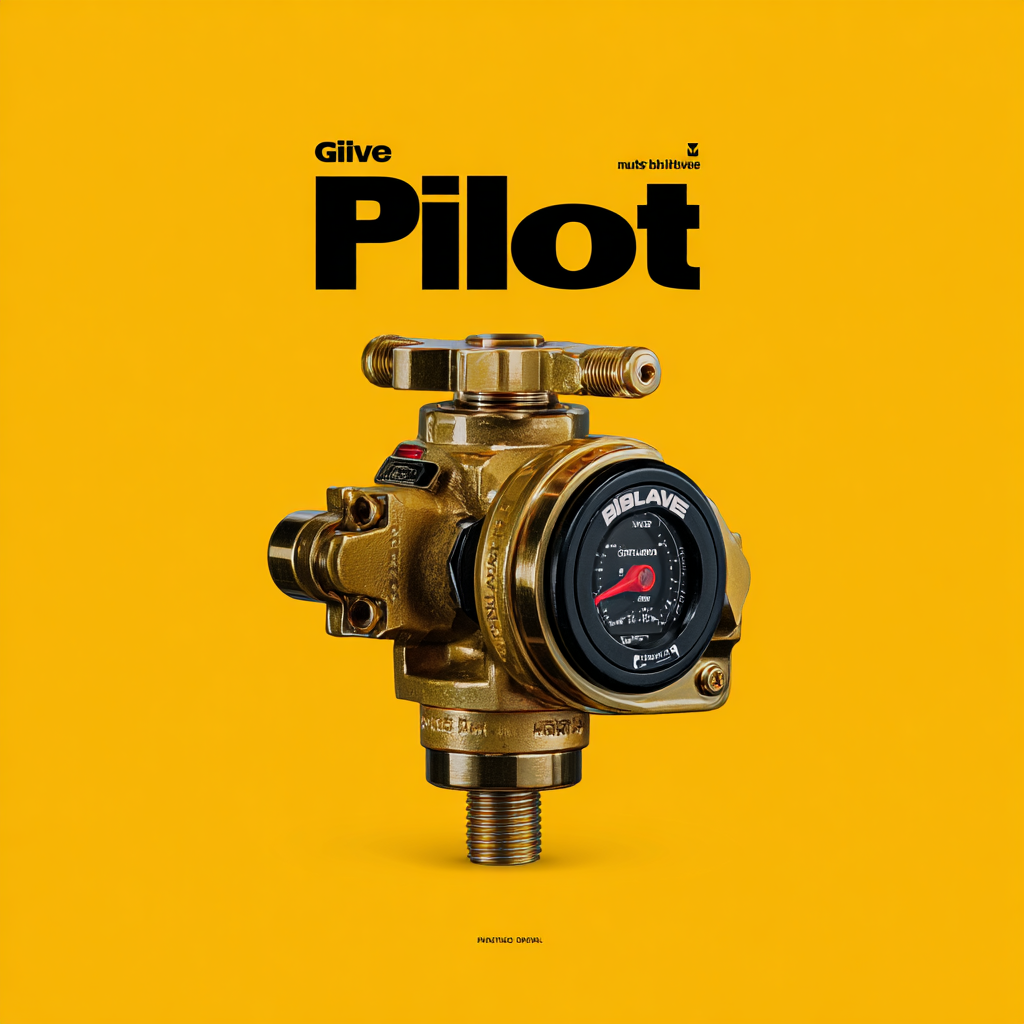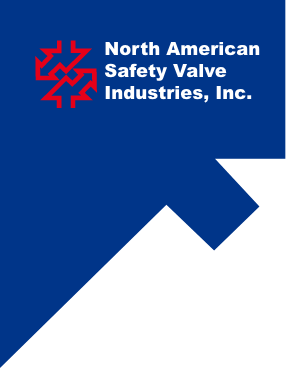The Definitive Ultimate Guide to Selecting the Best Pilot Valve for Your Needs
In the world of fluid control systems, selecting the right pilot valve is crucial for ensuring both efficiency and safety. According to a recent industry report by Grand View Research, the global market for pilot valves is projected to reach $6.44 billion by 2025, highlighting the growing importance of these components in various applications, from oil and gas to manufacturing. As industries strive for improved automation and precision, understanding the nuances of pilot valve types becomes essential. With diverse options available, from direct-acting to pilot-operated valves, making an informed decision can enhance system performance and reliability. This guide aims to provide comprehensive insights into the various types of pilot valves, enabling professionals to select the best option tailored to their specific needs.

Key Considerations When Choosing a Pilot Valve for Your System
When selecting a pilot valve for your system, there are several key considerations to keep in mind to ensure optimal performance, especially in high-pressure environments. One critical aspect is the definition and requirements of high-pressure valves. These valves must be designed to withstand elevated pressures and prevent leaks, necessitating a thorough understanding of material selection and construction standards. Additionally, understanding the specific application's pressure range will guide your choice in selecting a valve that meets both safety and operational efficiency.
Another important factor is the energy efficiency of the systems involved. With pumping systems accounting for a significant portion of global energy consumption, optimizing valve selection can lead to substantial energy savings. Pilot valves must be compatible with the pumps and actuators used in high-pressure systems to minimize wasted energy. Consider the various actuator options and ensure that the pilot valve can integrate smoothly, enabling effective control over flow rates and pressure settings. This will not only enhance reliability but also contribute to the overall efficiency of your system.
The Definitive Ultimate Guide to Selecting the Best Pilot Valve for Your Needs
| Dimension | Considerations | Typical Values | Applications |
|---|---|---|---|
| Flow Rate | Ensure compatibility with system requirements | 0.1 to 100 GPM | Hydraulic systems, Pneumatic applications |
| Pressure Rating | Select based on maximum system pressure | Up to 3000 PSI | Industrial machinery, Automotive systems |
| Body Material | Consider environmental factors and fluid compatibility | Brass, Stainless Steel, Plastic | Water systems, Chemical processing |
| Actuation Type | Choose based on control needs | Manual, Electric, Pneumatic | Automation, HVAC systems |
| Port Size | Match to piping system dimensions | 1/8" to 4" NPT | Fluid transfer, Pneumatic circuits |
Understanding Different Types of Pilot Valves and Their Applications
When selecting a pilot valve, it is crucial to understand the various types available and their specific applications. Pilot valves can be categorized into several types, including direct-acting, pilot-operated, and solenoid-operated valves. Direct-acting pilot valves are known for their quick response and are ideal for low-pressure applications, where immediate action is required. On the other hand, pilot-operated valves are more suitable for high-pressure systems, employing a control signal to regulate larger flows effectively.
Tips: Always consider the pressure range and flow requirements of your system when choosing a valve type. This will prevent issues related to underperformance or system failure.
Additionally, solenoid-operated pilot valves offer the advantages of automation and remote control, making them ideal for modern industrial applications. These valves allow for precise control and can be integrated into automated systems, enhancing efficiency and reliability. It’s essential to evaluate the specific requirements of your project to choose the right valve.
Tips: Evaluate the operating environment when selecting a pilot valve, including potential exposure to contaminants or extreme temperatures, to ensure optimal performance and longevity.
Essential Features to Look for in a Quality Pilot Valve
 When selecting a pilot valve that suits your needs, it's crucial to focus on essential features that ensure optimal performance and reliability. First, consider the material composition of the pilot valve. A quality valve should be made from durable materials that can withstand the specific environmental conditions it will face, such as corrosion, temperature fluctuations, and pressure variations. This will not only prolong its lifespan but also reduce maintenance costs significantly.
When selecting a pilot valve that suits your needs, it's crucial to focus on essential features that ensure optimal performance and reliability. First, consider the material composition of the pilot valve. A quality valve should be made from durable materials that can withstand the specific environmental conditions it will face, such as corrosion, temperature fluctuations, and pressure variations. This will not only prolong its lifespan but also reduce maintenance costs significantly.
Another vital aspect is the valve's flow capacity. It is important to choose a pilot valve that allows for the required flow rate while maintaining efficiency. Look for options that have adjustable flow settings, allowing you to fine-tune the valve's performance according to your system's demands.
Tips:
- Always check the manufacturer's specifications for compatibility with your existing system to avoid costly errors.
- Regularly inspect and maintain your pilot valve to ensure it operates at peak performance, which can prevent unexpected failures.
Finally, pay attention to the ease of installation and operation. A user-friendly design can save you time and ensure that your system is up and running smoothly without extensive delays.
Common Misconceptions About Pilot Valves You Should Know
When selecting a pilot valve, many misconceptions can cloud decision-making. One common myth is that all pilot valves are created equal, but this couldn't be further from the truth. According to a report by the International Society of Automation (ISA), the efficiency and reliability of pilot valves can vary significantly across different manufacturers and models. Features such as material composition, seal design, and actuator type can heavily influence performance metrics, making it crucial to understand your specific application needs before making a choice.
Another misconception is that higher cost always equates to better quality. A study from Frost & Sullivan indicates that while price can sometimes reflect quality, it’s not a definitive measure. There are numerous cost-effective pilot valve options that perform exceptionally well in niche applications simply due to innovations in design and materials technology. For instance, lightweight, durable polymers can provide significant advantages in corrosive environments, often at a lower price point than traditional materials. Understanding these nuances can help in selecting a pilot valve that meets the needs without overshooting the budget.
The Importance of Selecting the Right Pilot Valve
This chart illustrates common misconceptions about pilot valves and their impact on selection decisions. The data shows the percentage of users who misunderstand key features of pilot valves.
Maintenance Tips to Maximize the Performance of Your Pilot Valve
When it comes to ensuring the longevity and efficiency of your pilot valve, regular maintenance is key. First and foremost, it's crucial to inspect the valve for any signs of wear and tear. Look for leaks, corrosion, or buildup of debris that can hinder the valve's operation. A simple visual inspection can save you from costly repairs down the line, as early detection of issues is essential for maintaining optimal functionality.
Another important tip is to keep the valve well-lubricated. Use the appropriate type of lubricant as recommended by the manufacturer to reduce friction and wear on moving parts. A lubricated pilot valve can operate more smoothly, ensuring better performance and extending its service life. Additionally, scheduling routine maintenance checks with a qualified technician can help identify potential issues before they escalate.
Finally, be mindful of the environmental conditions where your pilot valve operates. Extreme temperatures, humidity, or exposure to corrosive substances can significantly impact its performance. By taking steps to protect the valve from these elements, such as insulating it or using protective covers, you can enhance its reliability and ensure it meets your operational needs effectively.

